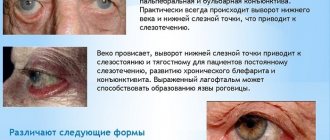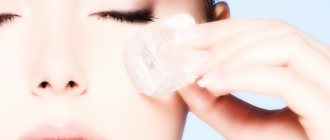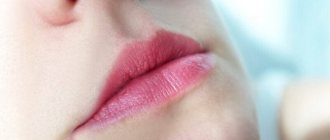— Advertising —
A person who does not have vision problems regards the ability to see the world around him clearly as a matter of course. But the slightest deviation can throw you off track. The usual way of life is disrupted, performance decreases, and the ability to assimilate information often deteriorates, most of which we receive visually.
We are faced with injuries and various diseases at every step that can lead to visual impairment. Is pain in the eyes always an indispensable symptom indicating some kind of disorder?
Common Associated Symptoms
- Itching and irritating sensations in the eyes, not only in the inner part of the eyeball, but throughout the entire surface.
- Constant flow of tears from the eyes for no apparent reason.
- Dry eyes, you often have to use special drops to maintain the natural balance of the mucous membrane.
- A subjective feeling of increased pressure in the eye or in a certain area of it.
- Vision disorders. The most famous of them are picture blur, as well as ghosting.
- Nystagmus. This is the twitching of the eyeballs at a certain pace.
- Swelling of the mucous membrane and nearby soft tissues.
Associated symptoms of eye pain
Causes not related to disease
Pain from the inside of the eyes can occur due to:
- Inflammation of the eye tissues from the inside due to sinus infections.
- Overvoltage from systematic work at the monitor. During the day, pain from the inside may not bother you, but in the evening the symptom worsens very much.
- Incorrectly selected optics for vision correction.
- Migraine.
- Injuries are also accompanied by swelling and redness of the conjunctiva from the inside.
- Penetration of a foreign body.
- Pinched cervical nerves due to osteochondrosis.
- Chemical, temperature or light burns. The pain begins a few hours after the incident.
Elena Malysheva will tell you about three common causes of eye pain:
Diagnostics
A specialist can determine the cause of the feeling of pressure on the eyes. The doctor finds out complaints and the presence of chronic diseases. If there is pressure on a person’s eyes at the time of consultation, the doctor measures what the person’s blood pressure is at the moment.
Then the ophthalmologist examines the visual organ, measures IOP, and assesses the condition of the fundus using biomicroscopy and ophthalmoscopy. If space-occupying formations are suspected, the doctor may prescribe an ultrasound of the eyeballs, MRI, or CT of the eye orbits.
An ophthalmologist will help you determine which specialist you need:
- neurologist;
- endocrinologist;
- therapist;
- cardiologist;
- oncologist;
- neurosurgeon.
To find out why there is pressure on your eyes, you should definitely visit an ophthalmologist. First, the doctor will measure your intraocular pressure. Normal values are 9-22 mm Hg. Art. If there are deviations, the ophthalmologist will prescribe an additional examination of the optic nerve. For a more accurate diagnosis, he will send the patient for examinations such as:
- MRI, CT. With their help, you can find out if there are tumors, inflammations and other similar diseases in your head.
- Vascular ultrasound. This diagnostic method will show the presence of vascular damage, the formation of blood clots, as well as the speed of blood circulation.
After a complete examination, the ophthalmologist will prescribe treatment or give a referral to another specialist if the root causes of pressure are not related to the organs of vision.
If your headache is often accompanied by pressure in your eyes, you should consult an ophthalmologist for help. Using special instruments, intraocular pressure levels are measured. Normally, eye tonometer readings should show 9-22 mm Hg. Art.
Also, when a patient complains that during a headache he has a feeling of pressure in his closed eyes, an ophthalmological examination is performed to assess the condition of the optic nerve. If a patient is determined to have papilledema, the suspected cause of discomfort is increased intracranial pressure.
An ophthalmologist can make a preliminary diagnosis and recommend additional examination to confirm it:
- Magnetic resonance imaging. Helps determine which pathologies provoke pressure on the eyes: tumor, cyst, hydrocephalus, stroke, aneurysm.
- Ultrasound of the vessels of the head and neck. Helps determine whether there are damage to blood vessels, thrombosis, and whether the speed of blood flow corresponds to the norm.
- Computed tomography. Using this study, it is determined whether there is an inflammatory process affecting the bone structure of the head. CT helps determine the development of diseases such as frontal sinusitis and sinusitis.
If the reason that the patient’s eyes hurt, as if they are pressing from the inside, is frontal sinusitis or sinusitis, treatment should be obtained from an ophthalmologist. It is this specialist who conducts a special examination that helps make a preliminary diagnosis. He also refers for additional examination and prescribes treatment.
Since a headache accompanied by pressure in the eyes can occur not only due to diseases of the eyes or ENT organs, the patient may have to turn to other specialists - a therapist, a neurologist.
Pachymetry procedure
- biomicroscopy of the eye;
- bacteriological examination to confirm or exclude the infectious nature of pain in the eyeball;
- pachymetry - study of corneal thickness;
- study of the retina and the condition of the cornea;
- measurement of intraocular pressure;
- determination of tear production.
If the current clinical picture contains symptoms that are not associated with ophthalmological diseases, then it is possible to carry out additional diagnostic procedures to differentiate one or another disease.
Drug treatment
Medicines can only be prescribed by the attending physician. You cannot choose medications yourself, because... This can cause serious harm to your health. Immediately after making a final diagnosis, the doctor will prescribe medications against the underlying cause. But they can also prescribe pills:
- Painkillers (Analgin, Pentalgin).
- Anti-inflammatory (Nurofen, Ibuprofen).
- Antibiotics (Amoxicillin, Cephalexin).
- Diuretics (Diacarb, Furosemide).
- Tranquilizers (Phenazepam, Chlordiazepoxide).
Additionally, eye drops may be prescribed. They will be used to:
- Relieve inflammation (Diclofenac).
- Constrict the pupil (Pilocarpine).
- Increase fluid outflow (Xalatan).
- Reduce fluid production (Bitoptik).
Also, to increase the effectiveness of treatment, the doctor may send the patient for therapeutic massage or special physical therapy. In special cases, when the disease is extremely dangerous, surgery may be required.
What to do if you have a pressing pain in your eyes
The feeling of pressure can be caused by various visual disorders. At the same time, it appears regularly, and after eliminating the cause, relief comes.
Possible causes of discomfort:
- Overwork. Visual stress is the most common cause of pain in the eyes. Overfatigue develops when spending a long time in front of the TV, reading in poor lighting and in transport, driving a car, or using a computer. When looking at the monitor, the eyes become fixed and blink less often, the cornea is not sufficiently moisturized and dries out. Dryness, a feeling of sand, squeezing sensations in the temples and the back of the head appear, and you want to sleep.
- Incorrect vision correction. Under-corrected or over-corrected glasses or contact lenses cause strain on the visual system needed to see better. Overwork, headache, pressure and pain occur. After removing glasses or closing your eyes, the unpleasant sensations are dulled.
- Inflammatory diseases. In this case, the pain is caused by inflammation of the mucous membrane of the eye - conjunctivitis, the vascular tract - uveitis, and the eye muscles - myositis. The pain intensifies with movement of the eyeballs and pressing on the orbit from above. There may be redness of the conjunctiva and lacrimation.
- Foreign body. The entry of a foreign body into the organ of vision causes pressing or cutting pain, accompanied by discomfort, especially when blinking, redness and lacrimation.
- Inflammation of the nerves. When the trigeminal or optic nerve is inflamed, intense pain occurs in the orbit. Optic nerve disease is accompanied by decreased visual acuity.
- Glaucoma. A disease that occurs due to increased intraocular pressure. The onset of the disease is asymptomatic. Then vision gradually decreases. During an attack of glaucoma, there is severe swelling inside the eyeball, the eyes become cloudy and circles appear.
- Allergic reaction. Pain in the eyes and head is accompanied by watery eyes, redness, burning and itching.
- Hypertensive crisis during a period of sharp exacerbation or systematic progression.
- Flu and other similar diseases.
- Nervous disorders.
- Vascular dystonia even at the initial stage.
- Tumors and cysts developing in the cranial cavity.
You cannot ignore a symptom; the sooner you start treatment, the easier it will be to cope with the problem that caused it.
To prevent eye diseases and other diseases that lead to eye pain, it is necessary to lead a correct lifestyle, follow a diet, exercise and fresh air. And most importantly, do not forget to give your eyes periodic rest, especially during activities that require constant increased concentration.
It will not be possible to independently eliminate unpleasant sensations from within the eyelid without knowing their nature. You can only take emergency measures before going to the ophthalmologist.
- First, instill pain-relieving eye drops (Indocollir, Alcain, Naklof), after reading the instructions, which indicate the dosage, adverse reactions, and contraindications.
- If you don’t have the listed medications with you, apply a compress of chamomile infusion or tea bags for 15–20 minutes.
- After the examination, the doctor prescribes medications. Usually these are drops with an antibiotic: “Floxal”, “Albucid”, “Tobrex”; or antiviral - “Timalin”, “Taurine-Dia”, “Derinat”.
- For bacterial diseases, ointments can also be prescribed: Erythromycin, Tobrex, Bonafton.
What to do if a child’s eye hurts? Drug therapy at a young age is acceptable, but you need to be more attentive to the instructions of the drugs. For example, Zovirax ointment is safe for sensitive babies, but Tobrex is not.
Diseases that cause eye pain
In addition to the above cases, when pain in the eyes occurs, albeit periodically, many people who consider themselves healthy and do not see a doctor have diseases in which pain in the eyes is the main symptom. In this case, the lack of medical assistance can lead to serious consequences.
- An eye injury is one of the common reasons for visiting an ophthalmologist. Sharp, sharp or dull, recurring or constant, it can be the result of a bruise or compression. And if the eye is swollen and painful, there are bruises or pain under the eye, then the help of a doctor is extremely necessary, and immediately. According to statistics, eye injury is the second leading cause of vision loss. After all, the matter is often not limited to visible bruising; the consequences range from hemorrhages to retinal tears or damage to the fundus.
- Conjunctivitis is an inflammatory process of the mucous membrane that occurs as a result of an allergic reaction or infection. In addition to painful sensations that increase with blinking, redness, lacrimation, and the appearance of mucous or purulent discharge may be present.
- Styes - why does the eyelid hurt? Each of us has at least once encountered this disease, which occurs with acute inflammation of the hair follicle of the eyelash or the sebaceous gland on the eyelid, called the meiboic gland. After some time, the swelling and pain are accompanied by a pustule - a formed purulent head. After self-opening, all symptoms gradually subside. If you try to remove it yourself, there is a risk of infection, which can cause abscess, phlegmon, thrombophlebitis of the eyelids and other serious complications. With untreated barley, the process becomes chronic with frequent relapses.
- Sinusitis is an inflammation of the paranasal sinuses, which causes swelling of the mucous membranes. In addition to difficulty with nasal breathing, headaches of different localization, swelling of the eyelids, a feeling of pressure on the eyes, and pain in the eyeball appear. Moreover, in some forms of sinusitis, the process can spread to the optic nerves, leading to decreased vision.
- Canaliculitis is an inflammation of the tear ducts, when the corners of the eyes hurt. Why is this happening? The reason lies in the presence of infection - both in the nasal cavity and in the eye. In this case, redness of the eyelids, swelling, lacrimation, and possible discharge of purulent contents also appear. If there is obstruction of the nasolacrimal duct, intended for the outflow of lacrimal secretions, stagnation occurs in the lacrimal sac, and dacryocystitis develops. Often the patient experiences stabbing pain in the eye, and only the help of a doctor can alleviate the condition.
- Glaucoma is a serious disease that, if left untreated, can lead to blindness. Among the causes of the disease is increased intraocular pressure. And although this term combines several dozen diseases with their own symptoms, most often the patient consults a doctor because of pain in the eyes and a sharp deterioration in vision, including light perception. In case of an acute attack, only visiting a doctor in the next few hours can save you from irreversible vision loss.
Folk remedies
Time-tested traditional methods allow you to quickly feel relief from even severe symptoms. However, they are not able to cure serious diseases, which is why they can only be used for minor problems.
The most effective methods:
- Eye wash. You will need to use a decoction of chamomile or aloe. You need to moisten a cotton pad in it, and then wipe your eye with it from the edge of your head to your nose so that the liquid is slightly squeezed onto the mucous membrane.
- Taking decoctions. It is enough to make a decoction of mint or lemon balm and drink it to reduce the pressure inside the eyes, getting rid of unpleasant sensations.
- Eye lotions. You need to moisten the bandage in nettle or chamomile infusion and apply it to your eyes for 10 minutes.
If after such procedures there is no improvement, you must consult a doctor.
If pressing pain in the eyes is caused by visual fatigue, you can use alternative medicine recipes. They will help to significantly reduce discomfort. The advantage of this effect is the almost complete absence of contraindications. There are many recipes for treating the eyes.
Traditional methods of treatment
You can have different attitudes towards self-medication, but situations are different. Is it worth doing something on your own to alleviate the condition if a visit to a doctor is not possible at the moment? Pain in the eyes for one reason or another has always bothered people; there are folk remedies that our grandmothers used.
- For irritation of the conjunctiva and dry eyes, warm compresses with green tea are used; you can also apply tampons soaked in an infusion of crushed aloe leaves, filled with water in a ratio of 1:10, to the eyes.
- For eye strain, lotions made from infusions of parsley, calendula, and mint are effective.
- You can apply lotions to barley and boils using an infusion of calendula and aloe (the juice of the squeezed pulp is diluted with water in a ratio of 1:10). You can also use a solution of chamomile, St. John's wort, and flaxseed.
Of course, it will not be possible to get rid of, for example, cataracts or glaucoma using folk remedies, no matter how much the proponents of alternative treatment convince you. In addition, when trying to treat yourself, remember the main rule: do no harm! If the fig for barley turns out to be just harmless, then the eye lotions with garlic or onions recommended by some authors, believe me, will cause serious harm. Therefore, it is better to stick to the medicinal herbs that nature gave us.
Treatment and prevention
Any, even minor, but long-term eye disease needs correction and proper treatment by a specialist. Doctors usually prescribe special medications for any disease. These are eye drops, as well as tablets, used primarily to get rid of other diseases in the body or intraocular infections.
Treatment and prevention of eye pain
Often patients are not prohibited from additionally using folk remedies. If eye pathologies appear or simply severe fatigue of muscles and nerves, it is recommended to carry out regular rinsing with solutions based on chamomile, plantain or seaweed.
The main method of preventing eye diseases is to follow the rules of hygiene, as well as the economical use of your own vision. You should give your eyes rest, perform special gymnastics if necessary, and also be careful when playing outdoor games or while working.
Do eye exercises once an hour
It is advisable to combine eye gymnastics with special drops. In order to strengthen vision for a long time and improve the condition of the eye muscles, you should use mineral and vitamin complexes, and also do not forget about proper nutrition. This will help improve the body's defenses, resulting in a lower risk of contracting an infectious disease.
In order to avoid the occurrence of this unpleasant symptom, you must adhere to the following rules:
- promptly treat diseases of the visual apparatus;
- monitor blood pressure;
- spend a minimum amount of time in front of a computer or TV;
- do gymnastics and eye massage after eye strain.
You should also remember to regularly visit an ophthalmologist for preventive examinations.
You can avoid unpleasant sensations associated with the organs of vision with the help of prevention. It involves changing your lifestyle and maintaining your health at a high level. What you will need:
- Give up bad habits (do not drink or smoke);
- Ensure that your home environment is as healthy as possible;
- Monitor your weight;
- Get enough sleep;
- Visit your doctor regularly if you have chronic illnesses.
Following these simple rules will reduce the risk of headaches that put pressure on the eyes to a minimum.
Causes
Overwork
This is the most common and easily explained reason that affects the appearance of pain inside the eyes. If the tension of the eye muscles is carried out for too long, their unadaptability to such loads is immediately noticed. To prevent these unpleasant symptoms, it is necessary to limit the time of activities such as continuous work with documents or small objects, reading, watching television without being distracted by additional events, working at the computer without taking breaks with proper exercise.
When the eye muscles are severely overworked, pain begins, the degree of intensity of which depends on the initial endurance of the muscles and nerves of the ocular system, as well as on the nature and duration of the activity that became a predisposing factor to the onset of pain.
To prevent eye strain, you need to take breaks and exercise your eyes.
People often complain of a feeling of sand in the eyes, discomfort of both acute and moderate nature, as well as unpleasant sensations when moving the pupils, followed by the movement of the eyeballs. These unpleasant symptoms indicate that the person did not take care of his eyes, which caused severe fatigue. If the visual apparatus is greatly overstrained, it is necessary to constantly alternate periods of work with rest and gymnastics for the eyes, otherwise discomfort and pain inside the eyes are almost inevitable.
It is necessary to additionally check the optimal illumination of your own work area. It is necessary to provide it with natural light, which is an excellent option, and if this is not possible, you will have to use a fairly powerful lamp, preferably installing it on a table or stand directly near the place of work.
Dry eye syndrome is often the cause of people complaining of pain in the inside of the visual apparatus. This unpleasant symptom most often occurs in people who spend most of their free time near digital equipment or in a building with poor lighting. Also, these symptoms sometimes occur in people who spend a long time with the air conditioner on continuously.
Sometimes doctors make mistakes when correcting vision, which can also lead to significant eye fatigue for any reason, and any such pathology sometimes causes severe pain in the inside of the eye. The appearance of this effect is often influenced by the incorrect selection of glasses. If you do not respond to this unpleasant symptom, your vision may deteriorate significantly only due to the action of inappropriate accessories for its correction.
Eye fatigue can occur due to incorrectly selected glasses
Typically, such pain is reflected by ordinary discomfort or minor aching sensations, but subsequently they manifest themselves most acutely and have high intensity. If pain appears only after selecting new glasses or lenses for vision correction, you should immediately seek advice from specialists to promptly replace unsuitable accessories.
Video: Causes of eye pain
Infectious eye diseases
The eyes and nasal sinuses are connected to each other, which automatically leads to the fact that the infection can freely penetrate along the passages from the nose to the visual apparatus. Most often, common diseases such as tonsillitis or sinusitis spread to the eyes. A distinctive feature of pain when microorganisms enter the eyes from the nasal passages is the shooting nature.
The cause of pain in the eyes can be caused by tonsillitis or sinusitis
It is in this case that people mainly complain of pain inside the eye, since its back surface is the most fragile. It is in these places that the largest number of nerve fibers is located. Pain occurs even with the slightest movement of the pupils or eyelids.
Sometimes pain inside the eye is caused by herpes. This is possible if the virus has affected the trigeminal nerve and caused significant inflammation in it. Infection can enter the eye even when standard caries spreads, especially when it is severely neglected for a long time.
Pain inside the eye can be caused by inflammation of the conjunctiva, which is a common occurrence for many people. Conjunctivitis at the initial stage causes severe itching of the entire visual apparatus. In the future, severe tearing is additionally manifested, and in the absence of treatment, pus may be released.
Stages of conjunctivitis
The eyeball itself often becomes inflamed. This process is called uveitis. It is usually caused by certain microorganisms that are infectious in nature, but in some cases autoimmune disorders occur, which does not allow you to quickly get rid of the disease, that is, pain inside the eye will be felt constantly. Distinctive signs of uveitis are a feeling of aching in the eyes, more severe pain when moving the pupils.
To cure an infectious process inside the eye, it is often enough to eliminate inflammation in the nasal passages, mouth, and other organs and systems of the body. In some cases, to successfully cure a disease, it is necessary to use antibiotics, and take them in a course.
Vascular diseases
Sometimes the blood supply to the eye deteriorates. This is usually explained by the presence of ischemia, that is, improper functioning of blood vessels throughout the body. To identify this pathology, you need to consult an ophthalmologist, undergo an ultrasound examination, and also make an appointment with a cardiologist. Only after completing all these measures can you count on receiving competent treatment.
Eye pain may occur due to ischemia
Coronary artery disease is characterized by a high probability of chronicity of the process, so it often takes several months to get rid of it. Throughout this period, a person must take medications prescribed specifically for him and lead a healthy lifestyle.
Gymnastics and exercises for the eyes
Gymnastics for the eyes is needed to get you in order after working at the computer, because our eyes are the most susceptible to fatigue.
Do all the exercises listed below for 5-6 seconds, know that the longer you can do it, the better. First, squint hard and look into the distance, pressing the corners of your eyes with your fingers so that wrinkles do not form. Pull the upper eyelid down without using your hands. Then lift it up in the same way.
If the pain is caused by overexertion or fatigue, then you can get rid of it with simple exercises. They can be used by both adults and children. What to do if there is pressure on your eyes:
- Look up and down, left and right.
- Draw a circle with your eyes clockwise, then repeat in the opposite direction.
- Draw a square first clockwise and then vice versa.
- Draw several figure eights horizontally and vertically with your eyes.
You can perform the exercises many times (up to 10 times), following the specified order. It is recommended to additionally repeat them with your eyes closed.
The eyeball is sore and red
The eyes are a unique organ in the human body. Because of their sensitivity, they are equipped with protection – for centuries. But it is not always possible to protect the mucous membrane from small particles. If pain is felt inside, then you need to examine the eye and check for the presence of foreign substances in it. The ingress of sand and debris is accompanied by severe pain and redness. Uncontrollable tearing also occurs. This is a natural protective function that helps small particles come out of the eyes on their own.
Vascular diseases are also accompanied by such symptoms. Capillaries in the sclera often burst, causing redness. This may be affected by exposure to strong winds and cold. When local blood flow is disrupted, the following symptoms occur. Excessive strain on the eyes may cause dryness.
When the eye muscles suffer from overstrain, this causes pain. Long-term reading, working at the computer, and prolonged watching of TV negatively affect the condition of the visual organs, especially in low light conditions. This leads to spasm. If you do not begin to eliminate such symptoms in time, deformation of the eyeball may occur. The pain syndrome may intensify when blinking.
Allergic conjunctivitis can also cause red and painful eyes. In addition, severe itching and uncontrollable lacrimation occur. Inflammation of the conjunctiva may occur. Diagnosis will require an examination by an ophthalmologist and an allergist. Antihistamines and antiallergic drops for topical use will help eliminate such symptoms.
Diseases of the visual apparatus
| Causes | Description |
| Foreign body | The destruction of some tissues or their severe bruising can be caused by any foreign object, for example, lenses, small things, if these elements accidentally enter the eye. Internal discomfort in the eyes often manifests itself in people who, due to their own work activities, are engaged in electric welding, are exposed to excessive lighting for a long time, or are exposed to noticeable flickering. Usually, a foreign body that remains on the mucous membrane can be removed by the victim independently. Then providing medical assistance is not necessary. Sometimes situations arise in which foreign bodies are too small, so you have to seek the help of a doctor with professional tools. The patient himself, if it is impossible to identify and remove foreign bodies, can only harm the eye, causing pinching and increased pain through ineffective actions. |
| Burn | If electric welding or similar work is carried out, there is a high probability that a person may suffer from a severe retinal burn if the protective equipment is used incorrectly or if it is used in an incomplete set. This condition is manifested by severe pain together with significant swelling of the entire ocular apparatus. Another characteristic detail is that all negative symptoms do not appear immediately, but after several hours after completion of work or during long-term implementation. |
| Microtrauma | If microtraumas of the ocular surface occur (corneal trauma when putting on a contact lens, damaged lens, accumulation of protein deposits on the lens), which are accompanied only by the feeling that something has got into the eye, do not neglect treatment, since the lack of treatment for microtraumas can lead to irritation and redness, which in turn can contribute to the development of complications (keratitis, keratoconjunctivitis, corneal ulcers), since damaged tissues are a gateway to infection. For the restoration of eye tissue, medications containing dexpanthenol, a substance with a regenerating effect, have proven themselves to be effective. In particular, the eye gel “Korneregel” has a healing effect due to the maximum concentration of dexpanthenol 5%*, and the carbomer included in its composition, due to its viscous texture, prolongs the contact of dexpanthenol with the ocular surface. |
| Injury | If a traumatic injury to the eye has a high degree of severity, which is expressed by severe pain from all parts of the eyeball, especially from its back side, there is a risk of severe deterioration of vision up to its complete loss, therefore it is necessary to treat injuries in a timely manner and not to overload vision for a long time after recovery. When the eye has undergone a minor cut or puncture, a blood clot appears inside the tissue, sometimes quite massive. If something other than a sharp object gets into the eye, abrasions and wounds appear. One of the most dangerous traumatic injuries to the eye is contact with the mucous membrane of small metal shavings. If these objects are not removed or the procedure is carried out long after the foreign element has entered, partial retinal detachment may occur, which is fraught with lifelong vision problems, as well as severe inflammatory processes. Sometimes even intraocular hemorrhage, which is provoked by a strong or unsuccessful blow, can lead to severe and irreversible consequences for a person’s vision. Often the patient initially does not notice these consequences, but subsequently pain inside the eye can remind of a dangerous pathology. |
https://www.youtube.com/watch?v=
A neurological disease such as migraine is manifested by severe pain in one half of the head, descending to the eye area. The pain is paroxysmal in nature and is so intense that the person becomes almost motionless. The pain is intensified by bright light and sounds. At the height of the headache, nausea and vomiting occur.
note
A characteristic symptom of migraine is the presence of an aura, when visual, olfactory or neurological disturbances occur before the onset of an attack. Thus, patients may feel that flashes of light and colored spots appear before their eyes.
Pain in the eye may be a manifestation of trigeminal neuralgia. The trigeminal nerve has three branches:
- eye;
- Maxillary;
- Mandibular.
The pathological process can affect either the entire nerve or only one branch. The main symptom of the disease is attacks of severe, excruciating pain in the innervation zone. If the ophthalmic branch of the trigeminal nerve is involved in the pathological process, then the person will be disturbed by severe pain in the forehead, bridge of the nose, and eyes.
During a painful attack, a person freezes, as if he is afraid to move, because any movement increases the pain. Blepharospasm and lacrimation may also be observed. Pain in the eye is also accompanied by optic neuritis. Nerve inflammation develops against the background of demyelinating diseases or infectious lesions.
Pain in the eyes is also observed with osteochondrosis of the cervical spine. Deformed vertebrae compress nerve roots and blood vessels, which leads to the formation of a characteristic clinical picture. The main complaint of people with cervical osteochondrosis is a nagging headache from the back of the head to the superciliary ridges.
- Flashing of flies, appearance of colored spots before the eyes;
- Doubling of objects;
- Deterioration of vision;
- Noise in ears;
- Dizziness;
- Crunch in the neck.
During the initial consultation with complaints of bursting eye pain, the ophthalmologist tries to detect diseases according to his profile. Such symptoms occur in many eye pathologies, but among the most common diagnoses, the following listed causes lead.
Eyes hurt with colds, vegetative-vascular dystonia, neurosis, and flu. In such cases, it is necessary to treat the underlying disease.
The eyeball hurts and radiates to the head
When there is pain inside the eyes and radiates to the head, a person is in a painful state. To reduce such symptoms, you have to look for a comfortable position. In addition, dizziness, nausea, and loss of coordination may occur. Such symptoms may indicate hypertension, migraine, or increased intraocular pressure.
With hypertension, additional black spots may appear before the eyes.
Glaucoma is accompanied by discomfort when moving. It is difficult for the patient to focus vision on a specific object. These symptoms may be accompanied by nausea. The occurrence of intracranial pressure causes pain in the forehead and eyes. The patient often suffers from insomnia.
The presence of migraine is accompanied by sensitivity to light. A person reacts painfully to loud sounds and music. Increased irritability and nervousness.
Often such symptoms occur due to disorders of the vascular system. The pain syndrome may intensify with a sudden movement of the head. Among serious diseases, ischemic stroke should be highlighted. Its occurrence is accompanied by severe pain and blurred vision.
Diseases of the peripheral or central nervous system
Pain in the eyes at different times of the day, when moving, appears as a result of diseases such as:
- Chalazion is a benign formation in the eyelid area. Discomfort increases while blinking.
- Stye - first the organs of vision are affected, then edema develops, the eyelids swell and, as a result, severe pain appears.
- Blepharitis is an infection of the eyelids, usually accompanied by a gritty feeling.
- Erosive processes in the cornea - appear as a result of injuries, accompanied by photophobia, throbbing pain.
- Infections of the nose, throat, ear - otitis, sinusitis. Pathogenic microorganisms enter the mucous membranes of the eyes and cause corresponding reactions.
- Dental problems - a tooth can hurt in different ways, including radiating to the eyes and forehead.
Migraine-type headaches may be accompanied by eye pain. With the so-called ophthalmological form of migraine, one eye often hurts, “flashes” and “lightning” may appear before the eyes, double vision, and a transient impairment of visual acuity.
In some cases, the eyes hurt due to inflammation of the trigeminal or facial nerves; in this case, on the affected side there is an acute “jerking” pain radiating to the eye area, reminiscent in nature and intensity of toothache.
When to see a doctor
It is impossible to list all the diseases that cause eye pain. In 70% of all known pathologies, eye pain is indicated as a symptom: diseases of the spine, autoimmune pathologies, connective tissue diseases, and many others. etc. – the list would be too lengthy. Therefore, it is best to contact a specialist. However, there are cases when there is no time to find out the cause of the pain; help is needed immediately! This:
- foreign body in the eye;
- injury;
- dull pain lasting more than two days;
- sudden deterioration of vision;
- addition of nausea, vomiting, photophobia.
Delay can lead to vision loss, even irreversible. Other, no less severe complications are also possible, such as cataracts, entropion, strabismus, astigmatism, etc.
Visual fatigue
This is one of the most common causes of eye pain. Long-term work at the computer extremely tires the eyes and causes overstrain of the oculomotor muscles. The consequences of spending many hours in front of a monitor screen will not be long in coming, and usually avid “computer geeks” have a very characteristic appearance, and their eyes hurt, watery and red.
These symptoms are provoked by the fact that while looking at the monitor, a person involuntarily begins to blink less often than necessary. As a result, tears quickly evaporate and are less well distributed over the ocular surface, which can lead to the development of dry eye syndrome.
To eliminate unpleasant symptoms, it is necessary to use tear substitutes.
Tear substitutes
- these are drugs designed to relieve the discomfort associated with dry eye syndrome, prevent its complications, and restore the tissues of the surface of the eye.
Examples of tear substitutes:
- Cationorm is a unique cationic emulsion for moisturizing the eyes, which restores all three layers of the tear film, permanently eliminating eye pain, intense discomfort and dryness that appear throughout the day, even in the morning, and prevents the further development of dry eye syndrome. Cationorm does not contain preservatives and can be used in conjunction with contact lenses.
- Cationorm is also suitable for people with other eye diseases (glaucoma, blepharitis, allergic conjunctivitis) and people using hormone replacement therapy.
- Ocutiarz - eye drops with ultra-high molecular weight hyaluronic acid without preservatives to quickly eliminate redness, pain and eye fatigue that appears at the end of the day after intense visual work. Ocutiarz is stored for 6 months after opening the bottle, it can be instilled onto contact lenses, and it is also often used to eliminate discomfort after ophthalmological operations on the cornea.
- Oftagel is an eye gel with carbomer in maximum concentration, long-term moisturizes, eliminates lacrimation and does not require frequent instillation; it can be used once at night if it is not possible to instill moisturizing drops during the day.
Violation of wearing lenses
Certain types of contact lenses require their own wearing regimen. You should strictly follow the ophthalmologist's recommendations, do not wear lenses longer than prescribed, and rinse thoroughly. Violation of the regime leads to painful sensations and dry eye syndrome develops.
It is worth giving the mucous membrane a rest and periodically changing lenses for glasses. Patients wonder if it is possible to wear them together? Definitely not possible. Glasses and lenses are two independent vision correction devices. Sharing will cause migraines and disrupt connections in the brain. During the period of treatment for a viral infection, wearing lenses is strictly prohibited; get rid of the pair that were on your eyes at the time of infection.
Preventive actions
The main preventive measures are aimed at preventing possible diseases of the visual organs and the use of protective equipment against mechanical damage and injury:
- eye hygiene;
- exercises to relieve fatigue of the eye muscles;
- healthy lifestyle (healthy eating, quitting smoking and drinking alcohol);
- avoid eye strain and ensure timely rest for the eyes after hard work;
- If your eyes are dry, use eye drops prescribed by your doctor;
- use protective equipment when working with chemicals, welding machines, in aggressive environments - masks, goggles, gas masks, etc.
Vision hygiene
Kinds
Pain manifests itself in several ways:
- Chronically the eye hurts inside, deep.
- It is painful to move the eye muscles, which indicates their overwork.
- The eye hurts when pressed from above - this means that the internal system of the organ of vision is affected.
- Only one eye hurts, even at complete rest. This is where injury or foreign body penetration is likely.
- Stitching pain from the inside occurs from muscle fatigue, nervous stress, injuries, and the diseases listed below.
- Pressive - usually accompanies headache.
- Cutting - appears when the eye tissue is damaged.
Diagnostic procedures
Visometry will help clarify the situation with the patient’s visual acuity. If the eye continues to hurt for several days, you will need to urgently consult an ophthalmologist. It is recommended to see a specialist, even if there is only one shot in the area of the visual organs, since this may be the first sign of the development of a serious ophthalmological pathology.
- visometry aimed at determining visual acuity;
- biomicroscopy, which reveals abnormalities in ocular tissues and structures;
- perimetry, which determines the boundaries of the patient’s field of vision;
- tonometry, used to measure intraocular pressure;
- ultrasonic waves for examining the eye and its orbit;
- ophthalmoscopy to examine the fundus of the eye.
Treatment
If you experience pain in the eye, you should consult an ophthalmologist. The doctor conducts a visual examination, studies the patient’s medical history and listens to his complaints. This is very important, because based on this data, the doctor can determine or guess what disease the patient is facing, especially if the eye hurts constantly.
It is impossible to cure pain on your own without knowing its etiology. Analgesics are taken to relieve severe pain if it is not possible to see a doctor. This is considered an emergency measure. For this effect, it is recommended to take the following drops: Octilia, Alcaine, Indocollir.
Before use, you must carefully study the instructions for the drug. The dosage should be strictly observed. If adverse reactions develop, stop taking the medication and consult a doctor.
Sometimes drugs cause allergies, which manifest themselves in the form of itching and burning of the mucous membrane. Often such symptoms disappear on their own within 10-15 minutes. If this does not happen, you can apply tea bags to your eyes. Discomfort usually occurs after the first instillation.
It is useful to wash your eyes with chamomile decoction. But if a dull pain of a persistent nature occurs, then the use of medications will be required. They are prescribed only after a full examination and determination of the cause of the development of unpleasant symptoms. In most cases, antibacterial, antiviral, and antihistamine medications are prescribed. Complex therapy may be prescribed. Traditional medicine is prescribed by a doctor. Self-medication can cause undesirable consequences.










